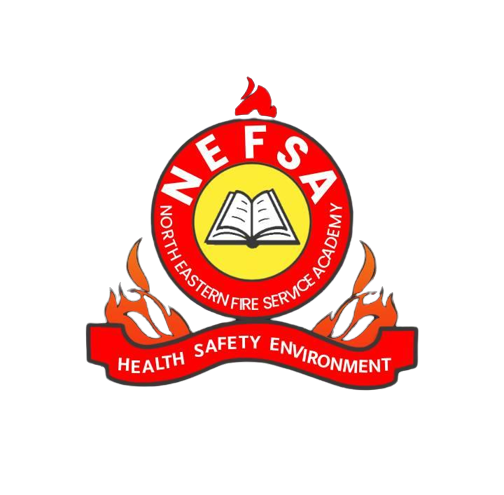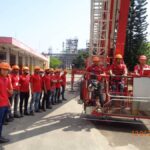2025 has shown that fire risk and the demands on first-responders are evolving fast from urban high-rises to industrial facilities and forest fires. That makes professional, up-to-date training crucial for saving lives, protecting property, and reducing community vulnerability. NEFSA (North Eastern Fire Service Academy) offers structured, government-recognized courses designed to meet these modern challenges and here’s why that matters now more than ever.
1) Incident rates and new risk patterns are rising
Several regions in India recorded sharp upticks in fire and forest-fire incidents in 2025, putting pressure on local services and exposing gaps in readiness. That trend coupled with higher urban density and complex building systems means prevention and skilled response are critical.
2) Severe infrastructure and capacity shortages
Industry leaders and trade bodies reported very large shortages in fire infrastructure and operational capacity (fire stations, maintained appliances, trained manpower). In practical terms, fewer and older resources make early detection, evacuation and coordinated firefighting even more dependent on trained personnel and community preparedness. Training fills that capability gap at scale.
3) Regulations and codes place responsibility on trained people and systems
India’s regulatory framework the National Building Code, state fire laws, and safety provisions in acts like the Factories Act puts clear duties on building owners and employers to maintain fire safety systems and trained staff. Compliance isn’t just paperwork: it requires competent fire officers, safety managers, and auditors roles that structured academies like NEFSA train for.
4) Modern threats require modern training methods
Causes of fire are shifting (electrical faults, industrial process risks, human error, and climate-driven wildfires). Responding safely now needs familiarity with modern detection systems, building HVAC/fire-stop interactions, chemical hazards, and chain-of-command incident management. NEFSA’s programs emphasize classroom theory, practical drills, and scenario-based training that mirror real-world complexity.
5) Health & safety for firefighters: training reduces on-duty harm
Global research shows firefighter injuries and fatalities remain a core concern; prevention through fitness, technique, and safer tactics is driven by training. Recent NFPA data (U.S.) highlights how causes like overexertion and exposure still dominate on-duty deaths, underscoring the universal value of up-to-date training in tactics, rehab, and personal protective equipment use. Well-trained crews both reduce risk to themselves and improve outcomes for victims.
6) Community resilience depends on trained leaders and outreach
Fire safety training isn’t only for firefighters. NEFSA and similar institutions train safety officers, facility managers, and community first-responders people who run fire drills, maintain detection systems, and make evacuation decisions. That expertise reduces property loss and saves lives before professional crews arrive. NDMA guidance also stresses detection (smoke alarms) and preparedness as simple, high-impact measures that trained teams help implement.
7) Technology adoption – VR, simulation, and analytics
Training providers are increasingly using VR simulations, live-fire towers, and incident-management software to teach high-risk scenarios safely. These tools let trainees rehearse rare but catastrophic events (high-rise rescues, hazmat leaks, large crowd evacuations) in controlled conditions so real operations are faster, safer, and more coordinated. Industry conferences and associations are promoting these tech approaches for 2025 preparedness.
What NEFSA brings to the table?
-
Government-recognized certifications that match employer and regulatory expectations.
-
Hands-on practical training: live drills, vehicle operations, ladder and rescue practice.
-
Specialized modules for industrial safety, firefighting tactics, safety officer certification and community training.
Actionable recommendations for organizations and individuals
-
Employers: map your fire safety skills gap, and enroll safety officers and facility managers in accredited courses. (Start with a baseline fire audit, then training.)
-
Local governments/municipalities: prioritize funding for equipment and routine training cycles not just one-off procurement.
-
Residents & schools: implement alarms, evacuation plans, and basic first-aid/fire-extinguisher drills; partner with local academies for community workshops.
Conclusion
2025 is a reminder that fires evolve as fast as the buildings, industries, and climates around them. The combination of rising incident patterns, infrastructure shortages, and complex modern risks makes accredited, practical fire safety training indispensable. NEFSA’s programs address both frontline firefighting skills and the broader community and workplace preparedness that together save lives and property which is exactly why NEFSA training matters now more than ever.
Sources
-
NEFSA Fire Academy — course & accreditation overview. nefsaindiablog.com
-
Times of India — India faces large shortages in fire infrastructure (IFSY 2025 reporting). The Times of India
-
Times of India — Maharashtra forest/field fire surge 2025. The Times of India
-
NDMA — fire safety guidance (importance of smoke alarms, preparedness). NDMA
-
NFPA — Fatal Firefighter Injuries 2024 report (implications for training and safety). NFPA







